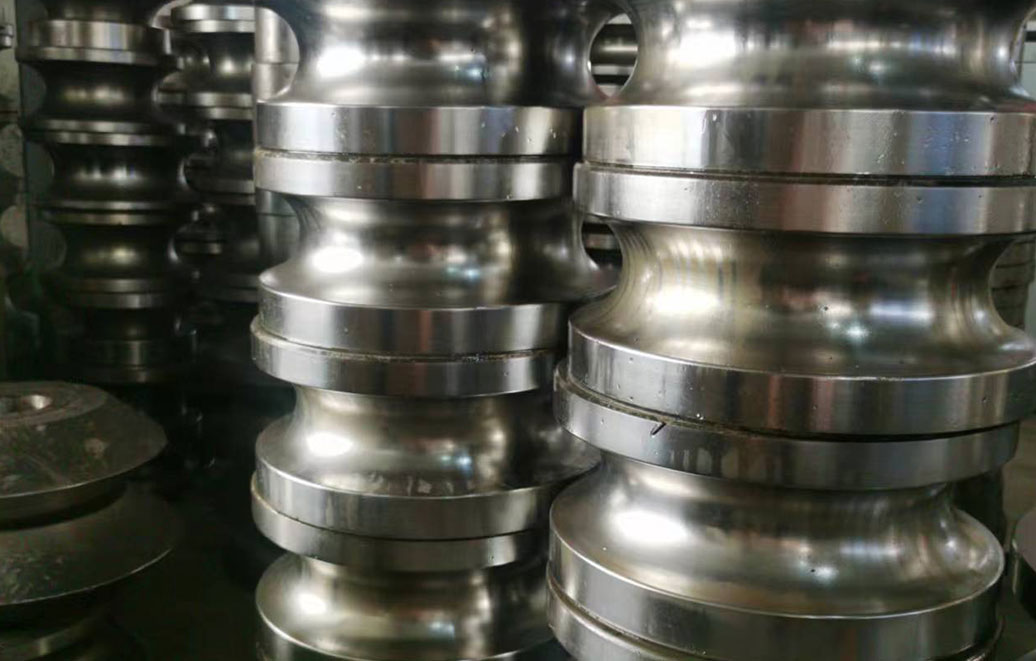roll forming machinery
Roll Forming Machinery An Overview
Roll forming machinery is a pivotal technology in the manufacturing landscape, holding a significant position in the production of metal components. This process involves a series of rollers that continuously bend a metal strip into a desired cross-sectional shape without cutting it. Its ability to produce long lengths of uniform profiles efficiently and cost-effectively makes it a preferred choice for manufacturers across various industries.
Understanding Roll Forming
At its core, roll forming is a sheet metal manufacturing process where a long strip of metal is fed through a series of rollers. Each roller is strategically positioned to progressively shape the metal until it reaches the final profile. This continuous-forming process can be used for a multitude of profiles, including channels, angles, and more complex designs, catering to diverse applications such as automotive, construction, and appliance manufacturing.
The roll forming process begins with a flat strip of metal, typically steel, aluminum, or other ductile materials. Depending on the desired final product, the metal strip might undergo preliminary operations, such as cutting and punching, before entering the roll forming machine. The rollers are designed with precision to achieve the desired shape gradually while maintaining a consistent thickness throughout the length of the material. This repeatable process ensures high quality and minimizes waste.
Advantages of Roll Forming Machinery
One of the most significant advantages of roll forming machinery is its efficiency. Once a machine is set up, it can produce components continuously at high speeds, significantly reducing production time compared to traditional methods. This makes roll forming particularly beneficial for high-volume production runs.
Moreover, roll forming can produce complex shapes with tight tolerances. The dimensional accuracy achieved through this process is essential for industries where alignment and fitting are critical. This capability also reduces the need for secondary operations, such as welding or additional machining.
Another advantage is the versatility of the material that can be processed. Roll forming machinery can handle a variety of metals and alloys, allowing manufacturers to adjust their inputs based on specific requirements, such as weight, strength, and corrosion resistance.
roll forming machinery

Applications of Roll Forming Machinery
The applications of roll forming machinery are extensive. In the automotive industry, it is used to create structural components, brackets, and trim pieces that are essential for vehicle assembly. The lightweight yet sturdy profiles produced through roll forming contribute to fuel efficiency and safety in modern vehicles.
In construction, roll forming machinery is employed to manufacture roofing materials, wall panels, and architectural details. This technology allows for the mass production of building materials that are not only aesthetically pleasing but also structurally sound.
The appliance industry also benefits from roll forming, producing components for refrigerators, washing machines, and other home appliances. These components often require exact specifications to ensure fit and functionality, which roll forming can precisely deliver.
Future Trends in Roll Forming Technology
As industries evolve, so does roll forming technology. Advances in automation and robotics are being integrated into roll forming processes, enhancing production efficiency and reducing labor costs. Additionally, the push for sustainability is encouraging manufacturers to utilize more recyclable materials and optimize their processes to minimize waste.
Furthermore, the advent of Industry 4.0 is set to revolutionize roll forming machinery, incorporating smart technologies that allow for real-time monitoring, adaptive control, and predictive maintenance. This shift offers manufacturers the ability to enhance productivity and response times to market demands.
Conclusion
Roll forming machinery stands out as a cornerstone of modern manufacturing, offering unparalleled efficiency, versatility, and precision. Its application across diverse industries underlines its importance in producing high-quality metal components. As technological advancements continue to emerge, roll forming is poised to adapt to the changing landscape, ensuring it remains a vital asset in production for years to come. Whether it's in automotive assembly lines or the construction of skyscrapers, roll forming will undoubtedly play a critical role in shaping the future of manufacturing.
-
High Frequency Straight Seam Welded Pipe Production Line-BzZhou Xinghua Machinery Equipment Manufacturing Co., LTD.|line pipe steel&welded gas pipeNewsJul.30,2025
-
High Frequency Straight Seam Welded Pipe Production Line-BzZhou Xinghua Machinery Equipment Manufacturing Co., LTD.|High Precision&Automated SolutionsNewsJul.30,2025
-
High Frequency Straight Seam Welded Pipe Production Line - BzZhou Xinghua Machinery Equipment Manufacturing Co., Ltd.NewsJul.30,2025
-
High Frequency Straight Seam Welded Pipe Production Line-BzZhou Xinghua Machinery Equipment Manufacturing Co., LTD.|Precision Welding, High EfficiencyNewsJul.30,2025
-
High Frequency Straight Seam Welded Pipe Production Line|BzZhou Xinghua|Precision Welding&EfficiencyNewsJul.30,2025
-
High Frequency Straight Seam Welded Pipe Production Line - BzZhou Xinghua|Precision Engineering&EfficiencyNewsJul.30,2025


